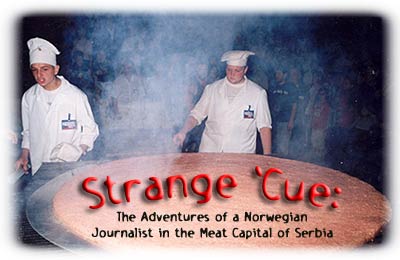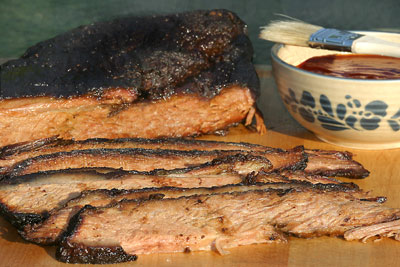By Sir Edward Tylor
Editor’s Note: Here is a solid—if short—attempt to summarize what was known about outdoor cooking around the world in 1878. This is an early example of food history writing that resonates with me because the author is comparing and contrasting cooking styles from around the world. Tylor is actually debunking claims that Americans invented barbecue.
Roasting or broiling by direct exposure to the fire seems the one method universally known to mankind, but the use of some kind of oven is also very general. The Andaman Islanders keep fire continually smouldering in hollow trees, so that they have only to clear away the ashes at any time to cook their little pigs and fish. In Africa the natives take possession of a great anthill, destroy the ants, and clear out the inside, leaving only the clay walls standing, which they make red hot with a fire, so as to bake joints of rhinoceros within. But these are unusual expedients, and a much commoner form of savage oven is a mere pit in the ground. In the most elaborate kind of this cooking in underground ovens, hot stones are put in with the food, as in the familiar South-Sea Island practice, which is too well known to need description. The Malagasy plan seems to be the same; but the Polynesians and their connexions have by no means a monopoly of the art, which is practised with little or no difference in other parts of the world. In the Morea, the traveller’s dinner is often prepared by making a fire in a hole in the ground, in which a kid or lamb is afterwards placed, and covered in by a stone made hot for the purpose.
The Canary Islanders buried meat in a hole in the ground, and lighted a fire over it; and a similar practice is still sometimes found in the island of Sardinia, while among the Beduins, and in places in North and South America, the process comes even closer to that used in the South Seas. It is this wide diffusion of the art which makes it somewhat doubtful whether Klemm is right in considering its occurrence in Australia as one of the results of intercourse with more civilized islands. The natives cook in underground ovens on very distant parts of the coast; sometimes hot stones are used, and sometimes not.
When meat or vegetables are kept for many hours on a grating above a slow fire, the combination of roasting and smoking brings the food into a state in which it will keep for a long while, even in the tropics. Jean de Lery, in the account of his adventures among the Indians of Brazil, about 1557, describes the wooden grating set up on four forked posts, “which in their language they call a “boucan;” on this they cooked food with a slow fire underneath, and as they did not salt their meat, this process served them as a means of keeping their game and fish. To the word boucan belongs the term boucanier, bucancir, given to the French hunters of St. Domingo, from their preparing the flesh of the wild oxen and boars in this way, and applied less appropriately to the rovers of the Spanish Main. The process has been found elsewhere in South America, and perhaps as far North as Florida. The Haitian name for a framework of sticks set upon posts, barbacoa, was adopted into Spanish and English; for instance, the Peruvian air-bridges, made over difficult ground by setting up on piles a wattled flooring covered with earth, are called barbacoas; and Dampier speaks of having “a Barbacue of split Bamboocs to sleep on.” The American mode of roasting on such a framework is the origin of our term to barbecue, though its meaning has changed to that of roasting an animal whole. The art of bucaning or barbecuing, as practised by the Americans, is found in Africa, in Kamchatka, the Eastern Archipelago, and the Pelew Islands; and it merges into the very common process of smoking meat to make it keep.
From Researches Into the Early History of Mankind and the Development of Civilization, by Sir Edward Burnett Tylor. New York: Henry Holt, 1878, 263.










